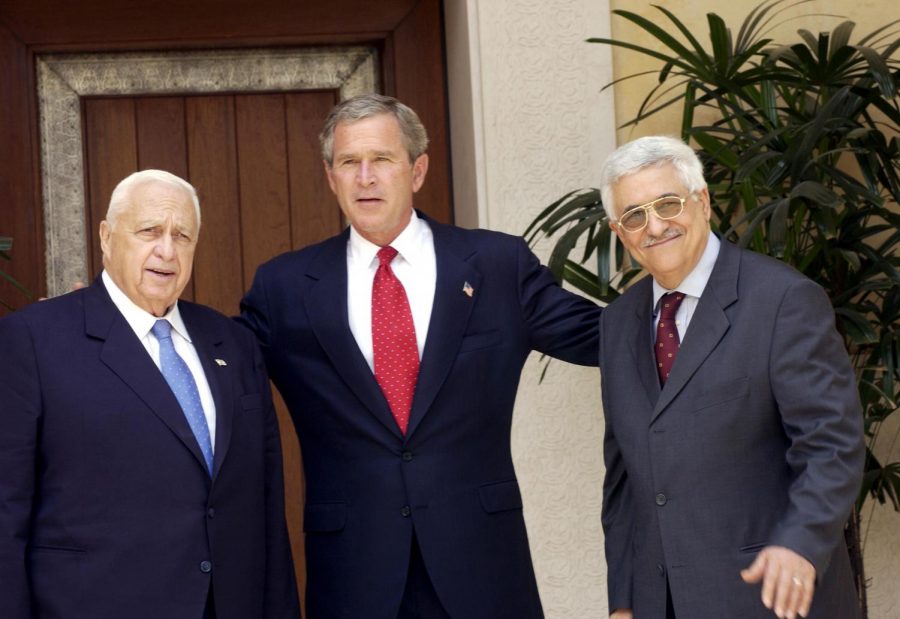This week in Israeli history
Published April 29, 2021
April 29, 1976 — Meretz Politician Tamar Zandberg Is Born
Meretz legislator Tamar Zandberg is born in Ramat Gan. An urban environmentalist and social democrat known for advocacy on women’s issues, she wins a Tel Aviv City Council seat in 2008. She is a leader in Israel’s 2011 social protest movement, then is elected to the Knesset in 2013 and 2015. She wins the party leadership in 2018 but loses it in 2019. She retains her Knesset seat in each of the four elections from 2019 to 2021.
April 30, 2003 — Framework for Peace Is Unveiled
The Quartet of the United States, Russia, the European Union and the United Nations issues its Roadmap for Peace, a framework for talks to achieve a two-state solution between Israel and the Palestinians. The plan comes during the Second Intifada. Israel lists 14 main concerns with the Roadmap but, like the Palestinian Authority, commits to trying to make it work. Hamas rejects it. Talks under the plan make no progress.
May 1, 1956 — Eshkol Approves Building Ashdod
Finance Minister Levi Eshkol, a future prime minister, authorizes the establishment of the city of Ashdod on the site of a former Palestinian village, Isdud, along the Mediterranean coast between Tel Aviv and Ashkelon. The name of Ashdod comes from an ancient city less than five miles away that was one of the centers of Philistine power. The first official Israeli residents, Jewish immigrants from North Africa, arrive in November 1956.
ADVERTISEMENT
May 2, 1968 — Channel 1 Starts Broadcasting
Israelis receive their first general-interest TV broadcasts when Israel Television goes on the air at 9:30 a.m. with the image of a menorah, soon followed by the Yom Ha’Atzmaut (Independence Day) parade. The new network is also known as General Television to distinguish it from Israel Educational Television, which launched in March 1966. The network becomes Channel 1 in 1994 when commercial network Channel 2 begins broadcasting.
May 3, 1906 — Actor Meir Margalit Is Born
Stage actor Meir Margalit, a winner of the Israel Prize, is born in Ostroleka, Poland. He begins acting in plays at age 13, and he moves to Palestine in 1922 through HeChalutz, an agricultural Zionist youth movement. He trains with the Ha’ohel Theatre, becomes a full cast member in 1929 and spends most of his career with the company. His only film role is Noah Simhon in 1964’s “The Simhon Family,” based on a popular radio show.
May 4, 1947 — Irgun Blasts Prisoners out of Acre
The Irgun carries out a complex operation to break 30 of its men and 11 Lehi members out of the British prison at Acre (Akko). The escape uses explosives smuggled into the prison and attached to the outside of the southern fortress wall. Six of the 41 freed prisoners are killed, and eight are recaptured. Three members of the attack team are killed. Five others are captured; three of them are executed. In the chaos, 182 Arab prisoners escape.
May 5, 1959 — Museum Marks First Official Yom HaShoah
Kibbutz Lohamei HaGetaot (the Ghetto Fighters) in the western Galilee welcomes 2,500 people to commemorate the first official Yom HaShoah (Holocaust Remembrance Day) under a law passed four weeks earlier. Founded by Holocaust survivors and resistance fighters, the kibbutz in 1949 opened the world’s first Holocaust museum, the Itzhak Katzenelson Holocaust and Jewish Resistance Heritage Museum, known as the Ghetto Fighters’ House.
Items are provided by the Center for Israel Education (israeled.org), where you can find more details.
















